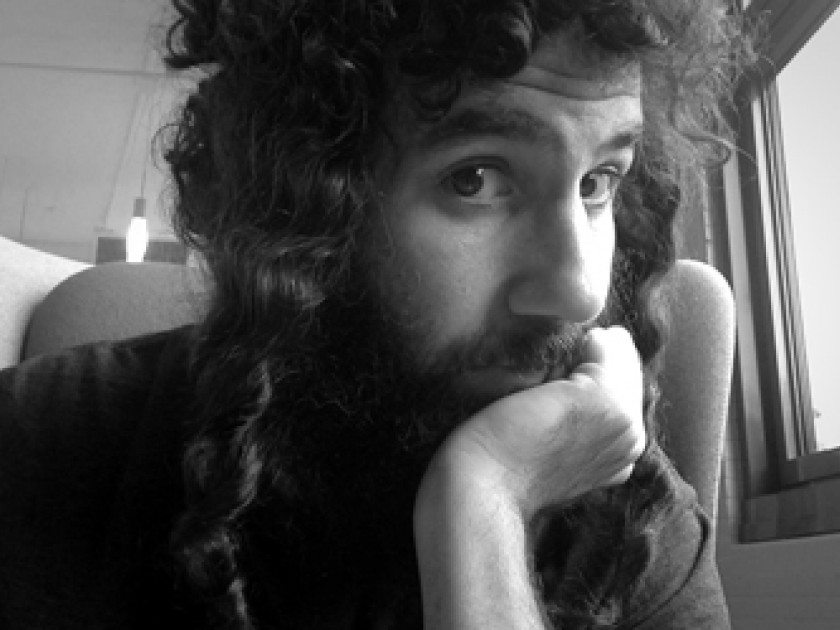
Celebrate Jewish Book Month with #30days30authors! JBC invited an author to share thoughts on #JewLit for each day of Jewish Book Month. Watch, read, enjoy, and discover!
Today, Matthue Roth, the author of The Gobblings, My First Kafka andLosers, shares some of the best Jewish books that aren’t getting published.
The best books are the ones you’ve never heard of and the ones you’ll never read. That’s conventional publishing wisdom, right? They’re too risky, too weird, too unproven. Everyone wants to publish a book like Harry Potter, but no one wanted to be the first to publish Harry Potter.
I’m not saying this because it happened to me. It did happen to me, of course. My last novel got sold, then the publisher wanted to change it from a story about a story about rape into a love story, and so I ended up publishing it for free.
Go read it! But not now! Now I want to tell you about these other books that you need to read. They’re books that I love, that you will probably love, even if conventional publishing wisdom tells you that you won’t. Because they haven’t gotten published yet. So, if you’re a publisher, or you just have a printer at work that you can use for free, track down these authors! Ask them if you can see their books! I highly recommend it.
The Bearded Lady Falls in Love, Goldie Goldbloom
Goldie Goldbloom has written one novel you can buy—The Paperbark Shoe, about love and woodland magic weirdness among country hicks and Italian prisoners of war in World War II-era Australia — and another, Gwen, which is only out in Australia, and is an incredibly erotic take on the painter Gwendolyn John and her unconventional internship with Auguste Rodin.
My favorite book of hers, though, is the magically-titled The Bearded Lady Falls in Love, which is about the decidedly less-conventionally-sexy subject of octogenarian Jewish anarchists. They also live in rural Australia, and have a commune. There’s family drama (but when is there not?), and two elderly lesbians with a ton of children. There is a giant beached whale. There are explosives, both metaphorical and literal. There are cautionary tales and crazy stories of family drama and growing up in the Australian wilderness, and it’s dizzying and scary and bursting with so much love.
Ariel Samson, Freelance Rabbi, MaNishtana
The reason that the writer MaNishtana belongs in the Cynthia Ozick/Bernard Malamud/I.B. Singer/Nicole Krauss canon of eternal Jewish writers is not that he’s a several-generation African-American Orthodox Jew or that he’s a prolific essayist and provocateur. It’s just that he writes these stories that mix wildly knowledgeable and wildly inventive interpretations of incredibly nuanced textual material and are more informed, and more playful and delightful, than pretty much anyone else who’s ever written fiction informed by a Talmud passage. His fluency with text and contemporary life is more than remarkable, it’s freaking insightful.
The Book Room at the End of the Third Floor, Elie Lichtstein
The tradition of secret rooms and secret passages in literary works has a long and hallowed history. My own first experience was probably the Woods between the Walls in the Chronicles of Narnia, although the more I think about it, the older the concept seems, dating back to kevitzas haderech in the Torah and the unpacking of words into verses into many-page stories in the Midrash.
In The Book Room, 12-year-old Igz Levine learns that he’s a Book Keeper – not the traditional Jewish sort of accountant, but part of an actual tradition that dates back thousands of years and crafts mezuzahs and Torah scrolls to keep mystical creatures safe. It wears its references to Rick Riordan and Suzanne Collins on its sleeve, along with, yes, Harry Potter, but Book Room is a whirling fizzgig of Jewish tradition and original magic that is completely its own.
Matthue Roth’s newest book is Rules of My Best Friend’s Body (which you can find here). It’s $6 on Amazon. By day, he’s a creative writer at Google.